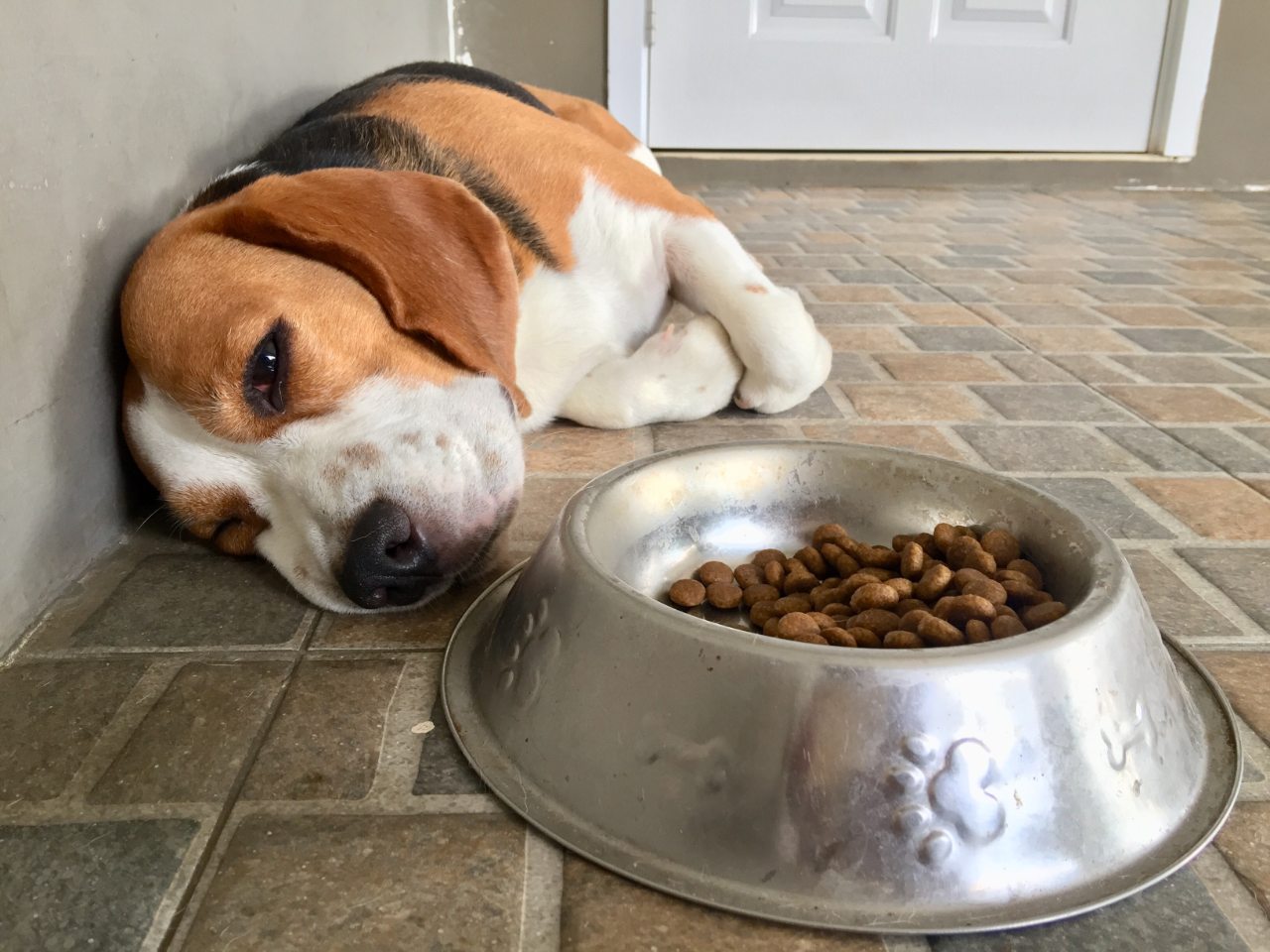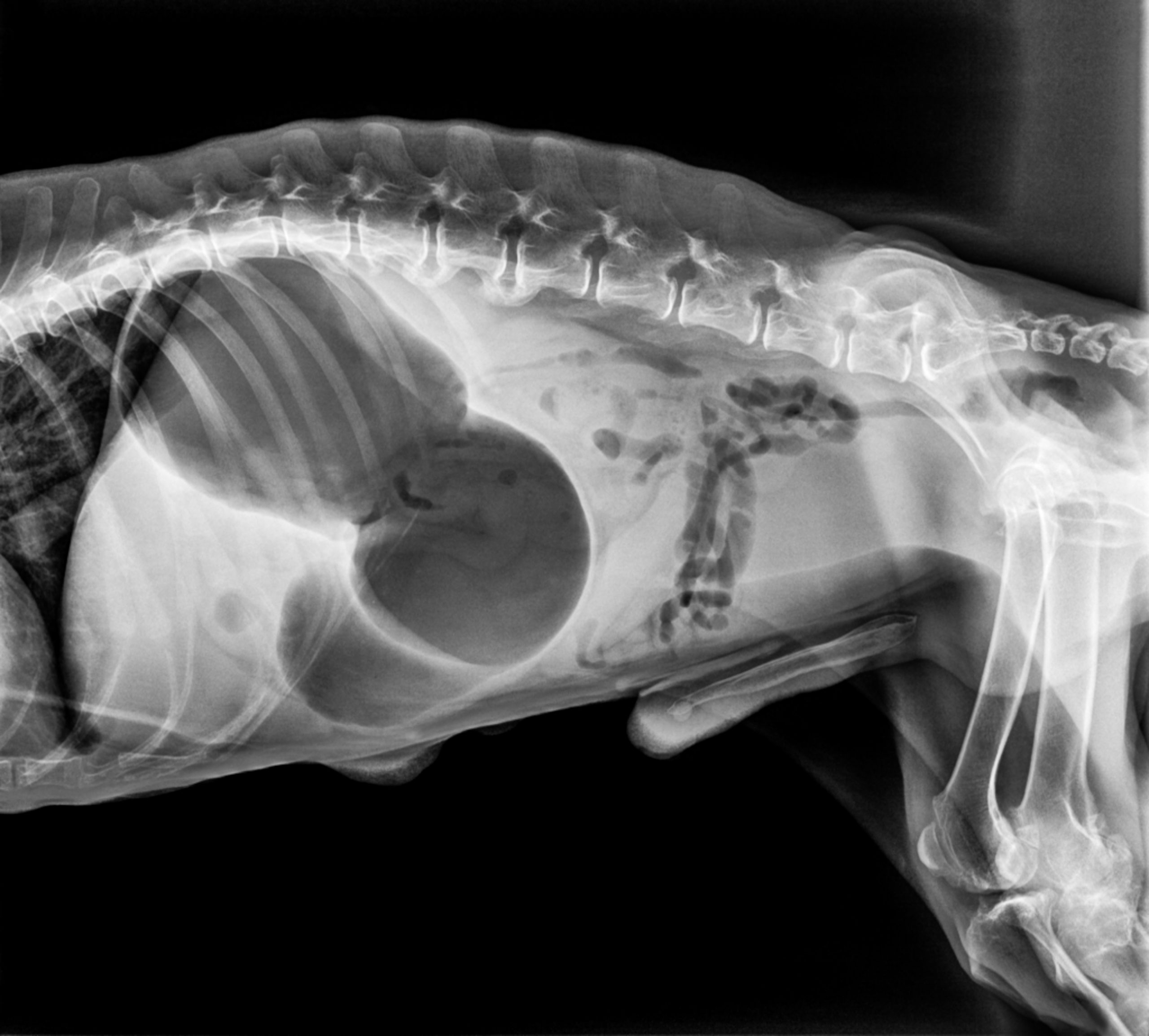As a cherished canine companion, your dog’s well-being is paramount. Bloat, also known as gastric dilatation-volvulus (GDV), poses a grave threat to canine lives. Understanding its onset and timeframe is crucial for prompt intervention and potentially lifesaving care.

Image: www.petinsurancereview.co.uk
Bloat occurs when the stomach twists and distends, trapping gas and fluid. This can rapidly escalate into a medical emergency. Without swift treatment, bloat can prove fatal within hours to days. The timeline of GDV progression varies based on individual factors, such as the severity of the bloat, the dog’s overall health, and the timeliness of veterinary intervention.
Understanding the Timeline of Bloat
The initial signs of bloat can be subtle, resembling digestive upset or discomfort. As the condition worsens, it will typically progress as follows:
Stage 1: Mild Discomfort
The stomach begins to distend and fill with gas. The dog may exhibit symptoms such as restlessness, pacing, and abdominal discomfort. These early signs can often be mistaken for indigestion.
Stage 2: Rapid Progression
As the stomach continues to bloat, the dog’s abdomen becomes noticeably distended. They may experience severe pain, anxiety, and a rapid heart rate. The twisted stomach can impair blood flow, leading to decreased oxygenation of vital organs.

Image: animalia-life.club
Stage 3: Death Without Intervention
If left untreated, bloat will inevitably lead to death. The timeframe between the onset of symptoms and this critical stage can be as short as a few hours. The severity of the bloat and the dog’s overall health significantly impact the progression of the condition.
Factors Influencing the Timeframe
Several factors can influence the time it takes for bloat to become life-threatening:
Severity of the Bloat
The extent of stomach twisting and distension determines the severity of the bloat. More severe cases will progress faster and pose a higher risk of complications.
Breed Predisposition
Certain dog breeds, such as large, deep-chested breeds like Great Danes and Irish Wolfhounds, are more prone to bloat. These breeds may experience a more rapid progression of the condition.
Underlying Health Conditions
Dogs with underlying health conditions, such as heart disease or respiratory issues, may be more vulnerable to bloat’s adverse effects.
Veterinary Intervention
Prompt veterinary intervention is crucial for improving the dog’s chances of survival. Early detection and treatment can prevent the bloat from progressing to a life-threatening stage.
How Long Does Bloat Take To Kill A Dog
Seeking Veterinary Care
If you suspect your dog may be experiencing bloat, act quickly. Symptoms of bloat can sometimes resemble other conditions, so it’s essential to seek professional veterinary care promptly. Immediate surgical intervention is typically necessary to save the dog’s life. In addition to emergency surgery, your veterinarian may administer pain medication, antibiotics, and IV fluids to support the dog’s recovery.
Prevention is always preferable, and there are steps you can take to reduce your dog’s risk of bloat. Feeding smaller, more frequent meals, avoiding strenuous exercise around mealtimes, and maintaining a healthy weight can help prevent the condition. Additionally, some veterinarians recommend prophylactic gastropexy, a surgical procedure that anchors the stomach to the abdominal wall, reducing the risk of twisting.
Bloat is a serious medical emergency that can strike quickly. By understanding the timeline of its progression, factors influencing its severity, and the importance of prompt veterinary intervention, dog owners can improve their beloved companions’ chances of survival.







